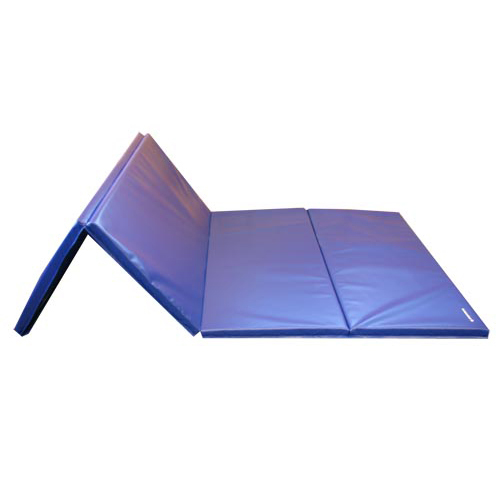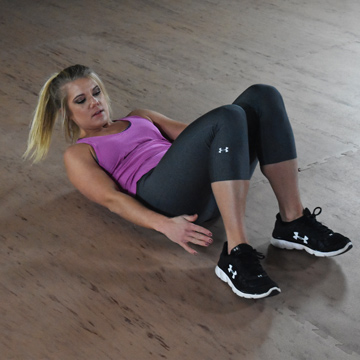Floor Exercise Mat Ideas: Workout Mats for Home
Related Product: Gym Mats 2 Inch x 5x10 Ft. V4 18 oz
- Cross Fitness
- Jazzercise
- Zumba
- P90X
- Cardio Kickboxing
- Insanity
- Plyometrics
- TaeBo
- Group Fitness
- Yoga
- Pilates and more!
Exercise mats provide many benefits, and they can transform cold, hard flooring into an ideal workout space. Floor mats for exercise purposes create comfortable and safe surfaces. They’re designed to deliver the right traction and cushion that you need to stay safe while working out. Many mats have shock absorbing properties to help keep you comfortable and reduce the impact that your joints need to absorb.
Greatmats workout mats are easy to install, and they’re suitable for all different types of settings. A folding exercise mat is easily portable and can be unfolded, used, and then folded back up and stored away. It instantly adds cushion and comfort to a harder surface, ideal for tumbling, floor exercises, and more.
Other fitness mat flooring options are suitable for longer-term installations. Interlocking foam mats fit together like puzzle pieces and are suitable for cardio, floor exercises, and more. Some specialty foam mats are designed for martial arts and other high-impact activities. Alternatively, interlocking rubber tiles create a strong, highly durable surface. They’re easy to install and can withstand the weight of heavy gym equipment, the impact of dropped weights, and more.
How to Choose the Right Exercise Mat for Your Needs
When choosing workout mats for a home gym, consider the types of exercise that the space will need to support. For floor exercises and yoga classes, you’ll want a soft, yet firm, cushioned flooring. Weight training and other high-impact activities will require a firmer, more durable floor that can withstand significant the impact associated with free weights.It’s also important to consider how the mats will be installed. Many mats, like folding gym mats and plyometric mats, can be laid on top of an existing floor, adding versatility to the space without the need for a long-term installation. Interlocking tiles, especially those made of foam, are also easy to install and typically don’t require any adhesive. This means you can remove the tiles when needed. This DIY installation can save you money over the cost of hiring a professional, making the mats more affordable and potentially a top choice for your home gym.
What kind of mat is best for exercise?
The type of mat that’s ideal for your needs will depend on the type of workouts that you do most often. Soft foam workout floor mats are ideal for floor exercises and yoga, while a rugged rubber floor exercise mat is a better choice for high-impact activities like dropping weights and the use of heavy exercise equipment.If you want to create a multi-purpose home gym, consider investing in rubber floor fitness mats as your base flooring, and then lay a foam personal exercise mat over them when you want a softer surface for floor exercises.
Is it bad to work out on carpet?
Carpet provides a soft surface that can make for a comfortable workout flooring, but it’s important that you choose the right type of carpeting for your workouts. High pile carpeting is soft underfoot but can be slippery, and it isn’t ideal for workouts that require maximized traction, like cardio or weightlifting. Shorter pile carpet can be more suitable, and you can even invest in carpet tiles to install over a concrete or other firm surface.Most carpets not intended for gym use can become easily damaged by equipment, generate static electricity during fitness activities and even leave rug burns on your skin, depending on the types of exercises performed on the floor.
If you have carpeting in your home and you’re looking to convert the area into a home gym, you can install many foam or rubber mats and tiles directly over carpeting. It’s important to make sure that this flooring is anchored down so that it doesn’t slide when you’re using it.
Is it bad to exercise on concrete?
Exercising directly on concrete isn’t ideal for many reasons. Concrete is hard and cold, so you’re likely to experience joint pain and overall discomfort sooner when exercising on this surface. High-impact exercises like jumping jacks can exacerbate this, meaning you’re not able to exercise as long, or you might feel the effects of your workout the next day - or longer.Concrete can also create challenges for your exercise equipment. Placing equipment like a treadmill or elliptical directly on concrete can generate lots of noise, since this flooring tends to create a live surface, especially if it’s in a garage or basement. Your equipment can also potentially damage your flooring, especially if you’re working with weights that you accidentally drop onto the floor.
Installing flooring on top of concrete can make it a much more workout-friendly surface. The proper workout flooring can help to protect your concrete floor from damage, reduce noise and reduce the risk for injuries. A soft exercise mat can make the space much more conducive to workouts, creating a softer, warmer, more forgiving surface so you can work out longer without discomfort.







